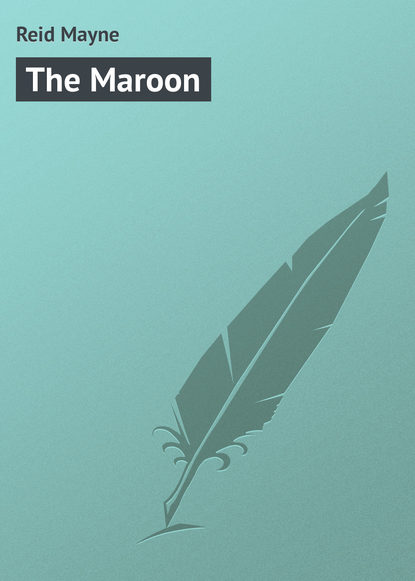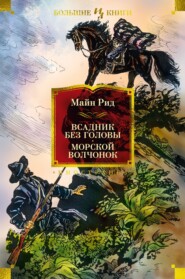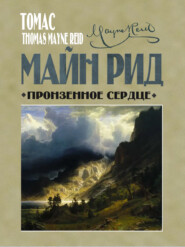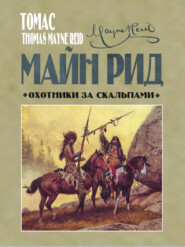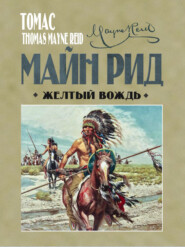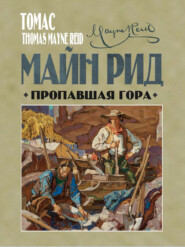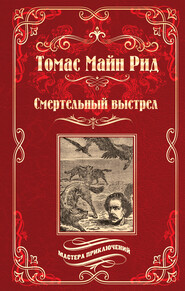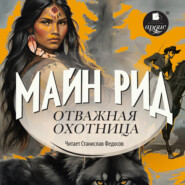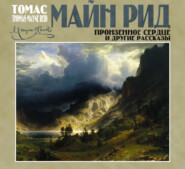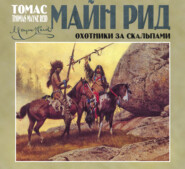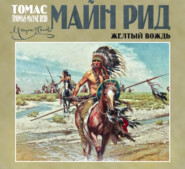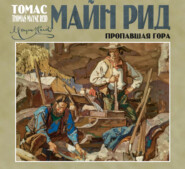По всем вопросам обращайтесь на: info@litportal.ru
(©) 2003-2024.
✖
The Maroon
Настройки чтения
Размер шрифта
Высота строк
Поля
The proofs were not very clear; but were deemed sufficiently so by the court to warrant a conviction.
Strange to say that of the three justices, the man’s own master – the president of the court – appeared the most anxious to bring the trial to this termination. So anxious indeed, that he used every effort to overrule the opinions of the other two: his superior position as custos giving him a certain power of controlling the decision. One of them had actually pronounced in favour of an acquittal; but after a whispering consultation with the custos, he retracted his former opinion, and gave his vote for the verdict.
There was a rumour at the time, that Loftus Vaughan, in this trial, was actuated by meaner motives than either a stern love of justice, or the desire to put down the practice of Obi. There was a whisper abroad of some secrets – family secrets – with which the Coromantee had become acquainted; some strange transaction, of which he was the sole living witness; and of such a character, that even the testimony of a negro would have been an inconvenience; and it was suspected that this, and not obeah-ism, was the crime for which Chakra had to answer with his life.
Whether this was true or not, the Coromantee was condemned to die.
The trial was not more irregular than the mode of execution, which these irresponsible justices thought fit to decree. It was almost as whimsical as it was cruel towards the wretched criminal.
He was to be taken to the top of the Jumbé rock, chained to the palm-tree, and there left to perish!
It may be asked why this singular mode of execution was selected. Why was he not hanged upon the scaffold, or burnt at the stake – a custom not unusual with condemned criminals of his kind?
The answer is easy. As already stated, at this particular period, much unpleasant feeling prevailed on the subject of obeah-ism. In almost every district mysterious deaths had occurred, and were occurring – not only of black slaves, but of white masters, and even mistresses – all attributed to the baneful influence of Obi.
The African demon was ubiquitous, but invisible. Everywhere could be witnessed his skeleton hand upon the wall, but nowhere himself. It had become necessary to make a conspicuous example of his worshippers. The voice of all planterdom called for it; and the myal-man, Chakra, was selected for that example – in the belief that his fearful fate would terrify the votaries of the vile superstition to their very hearts’ core.
The Jumbé rock suggested itself as the most appropriate place for the execution of the Coromantee. The terrors with which the place was already invested – added to those now to be inspired by the fearful form of punishment of which it was to be the scene – would exert a beneficial effect on the superstitious understandings of the slaves, and for ever destroy their belief in Obeah and Obboney.
Under this belief was the myal-man escorted up to the summit of the Jumbé rock; and, like a modern Prometheus, chained there.
No guards were placed near him – none were required to stay by the spot. His chains, and the terror inspired by the act, were deemed sufficient to prevent any interference with his fate.
In a few days, thirst and hunger, aided by the vultures, would perform the final and fatal ceremony – as surely as the rope of the hangman, or the axe of the executioner.
It was long before Loftus Vaughan ascended the mountain to ascertain the fate of the unfortunate negro, his ci-devant slave. When, stimulated by curiosity, and, perhaps, a motive still stronger – he, at length, climbed to the top of the Jumbé rock, his hopes and expectations were alike confirmed. A skeleton, picked clean by the John-crows, hung suspended to the stem of the tree!
A rusty chain, warped around the bones, kept the skeleton in place.
Loftus Vaughan had no inclination to dwell long upon the spot. To him the sight was fearful. One glance, and he hurried away; but far more fearful – far more terrifying – was that which he saw, or fancied he saw, in passing homeward down the forest path – either the ghost of the myal-man, or the man himself!
Volume One – Chapter Three
A Jamaica Déjeuner
On a tranquil morning in the fair month of May – fair in Jamaica, as elsewhere on the earth – a large bell ringing in the great hall of Mount Welcome announced the hour of breakfast.
As yet there were no guests around the table, nor in the hall – only the black and coloured domestics, who, to the number of half-a-dozen, had just come up from the kitchen with trays and dishes containing the viands that were to compose the meal.
Though but two chairs were placed by the table – and the disposition of the plates, knives, and forks indicated that it had been set for only that number of guests – the profusion of dishes, thickly covering the snow-white damask cloth, might have led to the belief that a large party was expected.
It was emphatically a déjeuner à la fourchette. There were cutlets plain, and with sauce piquante, cavished fish, entrées of devilled fowl and duck, broiled salmon, and the like. These hors d’oeuvres were placed around the table, while a cold ham on one dish, and a tongue on another, occupied the centre.
Of “bread kind” there were mealy yams – some mashed with milk and butter, and dished up in shapes – roast plantains, hot rolls, toast, cassada cakes, and sweet potatoes.
But that a splendid silver tea-service, and a large glittering urn were conspicuous, the spread might have been mistaken for a dinner, rather than the matutinal meal. The hour – nine o’clock a.m. – also precluded the idea of its being dinner.
Whoever were to be the guests at this table, it was intended they should fair sumptuously. So did they every day of their lives; for there was nothing occasional in that morning’s meal. Both the style and the profuseness were of diurnal occurrence – the mode of Jamaica.
Soon after the tones of the bell had ceased to vibrate through the hall, they for whom the summons was intended made their appearance – entering from opposite sides, not together, but one coming in a little before the other.
The first was a gentleman of somewhat over middle age, of a hale complexion, and fall, portly form.
He was dressed in a suit of nankeens – jacket and trousers, both of ample make – the former open in front, and displaying a shirt bosom of finest white linen, the broad plaits of which were uncovered by any vest. A wide turn-down collar was folded back, exhibiting a full development of throat – which, with the broad jaws of ruddy hue, appeared clean and freshly shaven.
From a fob in the waistband of his trousers hung a massive gold chain, with a bunch of seals and watch-keys at one end; while at the other was an immense chronometer watch of the old-fashioned “guinea gold,” with white dial, upon which the black figures were conspicuously painted. The watch itself could be seen; as, on entering, the wearer had drawn it out of its fob with a view of ascertaining whether his servants were punctual to the minute: for the gentleman in question was a very martinet in such matters.
Loftus Vaughan, Esquire, proprietor of Mount Welcome, – Justice of the Peace, and Custos Rotulorum, – was the man thus characterised.
After casting a scrutinising glance at the display of viands, and apparently satisfied with what he saw, the master of Mount Welcome seated himself before the table, his face beaming with a smile of pleasant anticipation.
He had scarce taken his seat when a fair apparition appeared entering from the further end of the hall – a young virgin-like creature, looking as fresh and roseate as the first rays of the Aurora.
She was habited in a dress, or rather an undress, of purest white: a morning wrapper of fine lawn, that, fitting closely behind, displayed the waving contour of her back. In front, the dress fell in loose folds – scarce, however, concealing the full, bold outlines of her bosom; and then draped gracefully downward, so low as to leave nothing visible but the tips of a pair of tiny satin slippers, alternately showing themselves like white mice as the young girl glided over the polished surface of the floor.
Her throat, full and finely rounded, was encircled with a string of amber beads; and a crimson blossom – the beautiful bell of the Quamoclit – glittered amidst the ample folds of her hair. This, of a rich chestnut colour, was parted on her forehead, and carried in a curving sweep over cheeks that rivalled the radiance of the flower.
It would have required an experienced eye – one well acquainted with the physiological characteristics of race – to have told that that young girl was not of the purest Caucasian blood. And yet the slight undulation of the hair; a rotund rather than an oval face; eyes of darkest umber, with a light gleaming perpetually in the pupils; a singular picturelike expression in the colouring of the cheeks – were all characteristics, that proclaimed the presence of the sang-mêlée.
Slight indeed was the taint; and it seems like profanation to employ the phrase, when speaking of a creature so beautifully fair – for beautifully fair was the daughter of Loftus Vaughan. She was his only daughter – the only member of his family: for the proprietor of Mount Welcome was a widower.
On entering the hall, the young girl did not proceed directly to seat herself; but, gliding behind the chair occupied by her father, she flung her arms around his neck, and imprinted a kiss upon his forehead.
It was her usual matutinal salute; and proved that, on that morning they had met for the first time.
Not that it was the first appearance of either: for both had been much earlier abroad – up with the sun, indeed, as is the universal custom in Jamaica.
Mr Vaughan had entered the hall from the front door, and the broad-brimmed Leghorn hat, and cane carried in his hand, told that he had been out for a walk – perhaps to inspect the labour going on at the “works,” or ascertain the progress made in the cultivation of his extensive cane-fields.
His daughter, on the contrary, might have been seen entering the house some half-hour before, in riding costume – hat, habit, and whip – proving that her morning exercise had been taken on horseback.
After saluting her father as described, the young girl took her seat in front of the coffee urn, and commenced performing the duties of the table.
In this she was assisted by a girl apparently of her own age, but of widely-different appearance. Her waiting-maid it was, who, having entered at the same time, had taken her station behind the chair of her mistress.
There was something strikingly peculiar in the aspect of this personage – as well in her figure as in the colour of her skin. She was of that slender classic shape which we find in antique sculptures – like the forms of the Hindoo women known in England as “ayahs” and differing altogether from the negro outline. Her complexion, too, was not that of a negress – still less of a mulatta or quadroon. It was an admixture of black and red, resulting in a chestnut or mahogany colour; which, with the deep damask tincture upon her cheeks, produced an impression not unpleasing.
Nor were the features at all of a negro type. On the contrary, far removed from it. The lips were thin, the face oval, and the nose of an aquiline shape – such features as may be traced on Egyptian sculptured stones, or may be seen in living forms in the lands of the Arab.
Her hair was not woolly, though it differed altogether from the hair of a European. It was straight, and jet-black, yet scarcely reaching to her shoulders. Not that it had been shortened by the scissors: for it appeared to be at its fullest growth; and, hanging, as it did, loosely over her ears, it imparted a youthful appearance to the brown-skinned damsel.
The girl was far from ill-looking; and, to an eye accustomed to her “style,” she may have appeared even handsome. Her elegant shape, exposed by the extreme scantiness of her costume – a sleeveless robe, with a Madras kerchief worn à la toque upon her head – her graceful attitudes, which seemed natural to her, either when in motion or standing poised behind the chair of her mistress; the quick glance of her fine, fiery eyes; and the pearl-like whiteness of her teeth; all contributed to make up a picture that was far from commonplace.
This young girl was a slave – the slave Yola.
Volume One – Chapter Four
Two Letters





